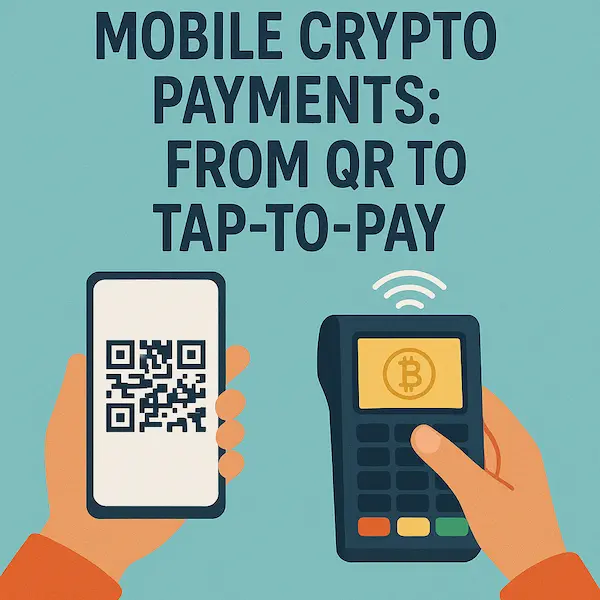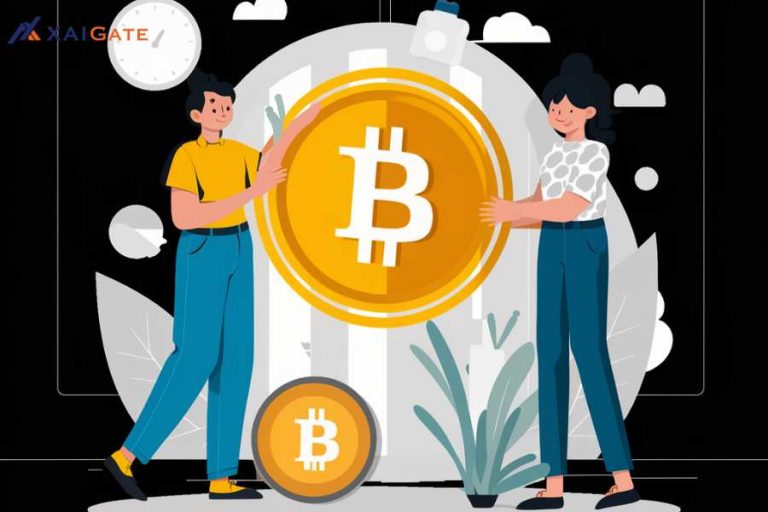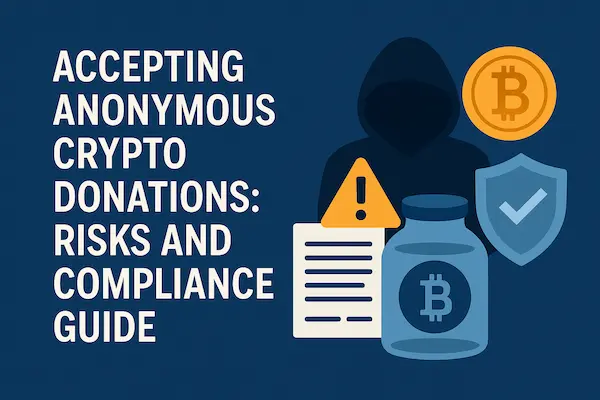Digital payments as an industry have changed beyond measure in the last 10 years. Starting as a niche technology in the hype of tech enthusiasts, crypto became a mainstream payment mechanism that is reconfiguring our concept of money. The future of this revolution is the technology of mobile crypto payments, which provides users with unmatched control over their money transfers and gives businesses a higher level of speed and security of payments.
Beginning with the days when the transaction of Bitcoin wallets needed the inclusion of complicated addresses to the current tap-to-pay systems, it is undoubtedly a miraculous climb of mobile payments in the crypto world. This change has opened up cryptocurrency to those millions of users that would never dream of using digital money because they found it too complex or dangerous.
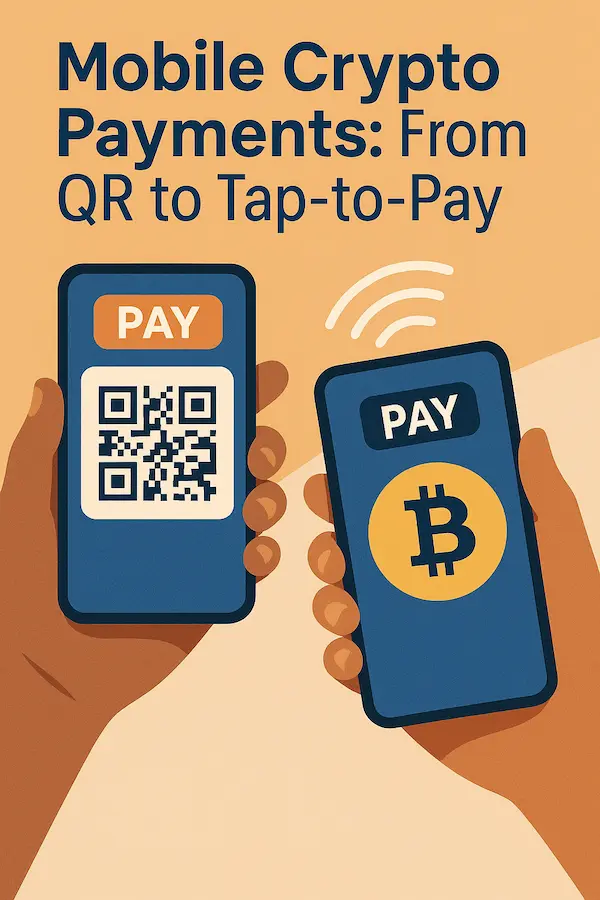
Contents
- 1 The Evolution of Mobile Crypto Payment Technology
- 2 Popular Mobile Crypto Payment Methods
- 3 Comparison of Mobile Crypto Payment Technologies
- 4 Major Mobile Crypto Payment Platforms
- 5 Technical Infrastructure Behind Mobile Crypto Payments
- 6 Benefits of Mobile Crypto Payments
- 7 Security Considerations and Best Practices
- 8 Regional Adoption and Regulatory Landscape
- 9 Future Trends and Innovations
- 10 Challenges and Limitations
- 11 Comparison with Traditional Payment Methods
- 12 Industry Case Studies
- 13 FAQ – Mobile Crypto Payment
- 14 Conclusion
The Evolution of Mobile Crypto Payment Technology
Early Days: Complex Addresses and Manual Transfers
The original form of crypto payment was in no respect pleasant to work with. They had to manually add multiline wallet addresses to the computer by copy and paste, had to carefully check the length of characters since even a misplaced character could cost them, and had to wait hours until the network confirmations. This did not only pose a threat to the newcomers to it, but also there existed possibilities of human fallibility.
At the time, popular crypto payment was only to the crypto enthusiast group who was aware of the technical complexities. There was a high chance of transferring money to a wrong address and it was not easy to undo a transfer when it was published on the blockchain.
The QR Code Revolution
The introduction of QR codes marked a pivotal moment in the evolution of mobile crypto payments. These square, pixelated codes transformed the payment experience by:
- Eliminating manual address entry: Users could simply scan a code instead of typing complex wallet addresses
- Reducing transaction errors: QR codes minimized the risk of sending funds to incorrect addresses
- Speeding up the payment process: What once took minutes could now be completed in seconds
- Improving accessibility: Even non-technical users could make crypto payments with ease
QR codes became the standard for mobile crypto payments, appearing everywhere from coffee shops to online retailers. This technology bridge the gap between complex blockchain addresses and user-friendly payment experiences.
Current State: Tap-to-Pay and NFC Integration
Today’s mobile crypto payments have reached new heights of convenience with Near Field Communication (NFC) technology. Tap-to-pay solutions allow users to complete transactions with a simple tap of their smartphone, making crypto payments as easy as traditional contactless card payments.
Modern mobile crypto payments now feature:
- Instant transaction processing
- Biometric authentication
- Multi-currency support
- Automatic conversion rates
- Transaction history tracking
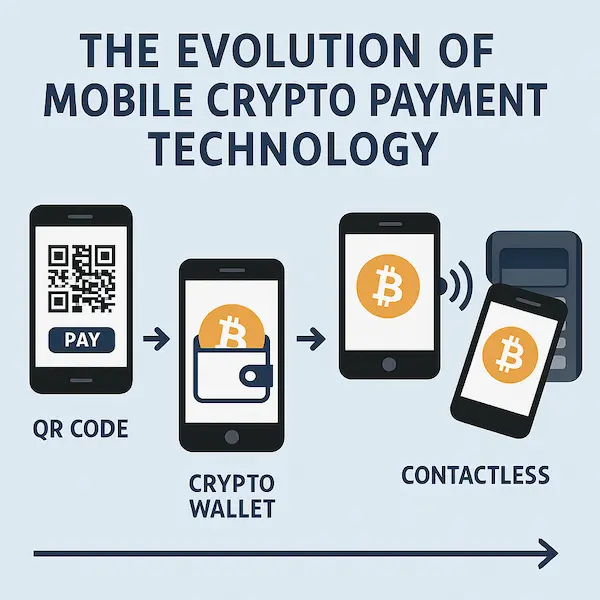
Popular Mobile Crypto Payment Methods
QR Code Payments
QR code payments remain the most widely adopted method for mobile crypto payments. Here’s how they work:
- Merchant generates QR code: The seller creates a unique QR code containing their wallet address and payment amount
- Customer scans code: Using their mobile wallet app, the buyer scans the QR code
- Transaction details populate: The payment amount and recipient address automatically fill in
- User confirms payment: After reviewing the details, the user authorizes the transaction
- Blockchain processing: The transaction is broadcast to the network for confirmation
Advantages of QR Code Payments:
- Universal compatibility across devices
- No additional hardware required
- Works offline for code generation
- Easy to implement for merchants
- Familiar technology for consumers
Limitations:
- Requires camera access
- Can be affected by lighting conditions
- May not work with damaged or poorly printed codes
- Requires visual line of sight
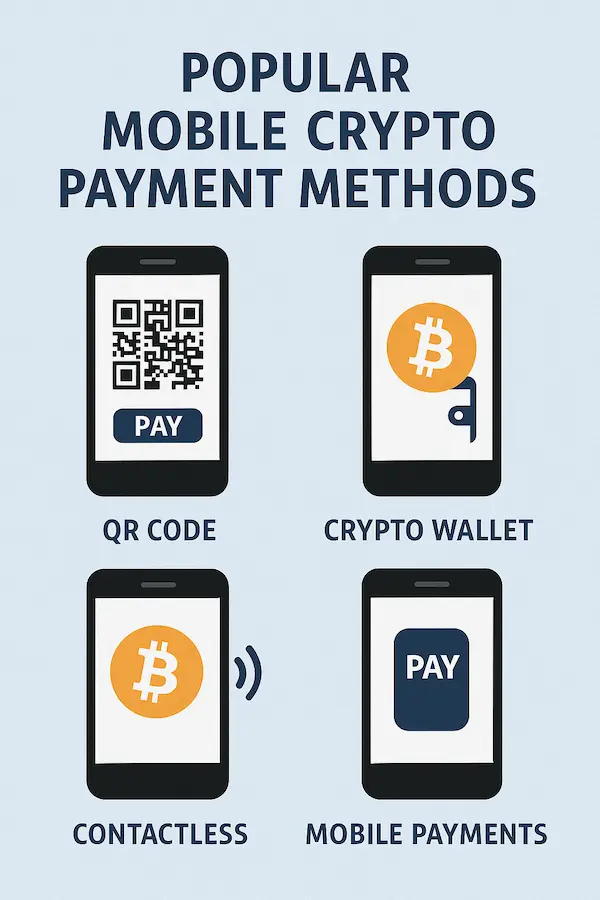
NFC and Tap-to-Pay Solutions
NFC technology has revolutionized mobile crypto payments by enabling contactless transactions. This method offers several benefits:
How NFC Crypto Payments Work:
- Wallet app activation: User opens their crypto wallet app
- NFC enablement: The app activates NFC functionality
- Tap interaction: User taps their phone near the merchant’s NFC terminal
- Data exchange: Payment information transfers wirelessly
- Transaction completion: The payment processes automatically
Benefits of NFC Payments:
- Faster transaction times
- More secure than QR codes
- Works without internet connectivity
- Familiar user experience
- Reduced fraud risk
Biometric Authentication Integration
Modern mobile crypto payments increasingly incorporate biometric security features:
- Fingerprint scanning: Quick and secure transaction approval
- Face recognition: Seamless authentication process
- Voice recognition: Hands-free payment authorization
- Iris scanning: Advanced security for high-value transactions
These biometric features make mobile crypto payments more secure while maintaining ease of use.
Comparison of Mobile Crypto Payment Technologies
|
Technology |
Speed |
Security |
Ease of Use |
Hardware Requirements |
Adoption Rate |
|
QR Codes |
Fast |
Medium |
High |
Camera only |
Very High |
|
NFC/Tap-to-Pay |
Very Fast |
High |
Very High |
NFC chip |
Growing |
|
Manual Entry |
Slow |
Low |
Low |
None |
Declining |
Major Mobile Crypto Payment Platforms
Established Players
PayPal and Venmo These popular services have worked in the support of cryptocurrencies, as users can not only purchase, sell, and spend them but do them right in the mobile app. Their huge number of players has made mobile crypto payments less outrageous to the common citizen.
Cash App Square also features Cash App that has emerged as a favourite among mobile payment cryptos with the ability to purchase Bitcoin or make peer-to-peer transmissions through a very friendly interface that adamantly suits younger audiences.
Coinbase Wallet Coinbase is a giant in the world of cryptocurrencies, making a complete mobile wallet, which is compatible with numerous cryptocurrencies and payment networks.
Emerging Platforms
Built on Bitcoin Lightning Network, Strike provides us with low-cost and high-speed mobile cryptocurrency payments and focuses on efficiency and speed.
Flexa This service allows mobile cryptocurrency payment at big stores so that the user would convert his cryptocurrency to a traditional currency in the point of sale.
BitPay One of the first crypto payment processors on the market, BitPay, still innovates in the mobile crypto payment sector by adding novel features and integrating with merchants.
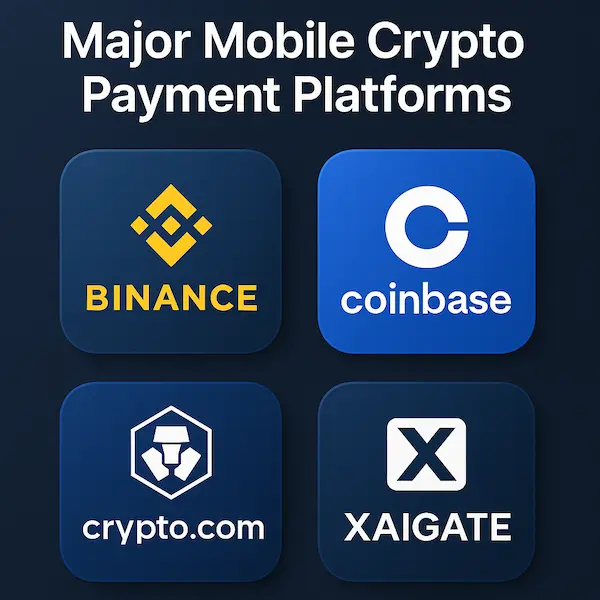
Technical Infrastructure Behind Mobile Crypto Payments
Blockchain Networks
Mobile crypto payments rely on various blockchain networks, each with unique characteristics:
- Bitcoin: The original cryptocurrency network, known for security but slower transaction times
- Ethereum: Smart contract functionality enables complex payment applications
- Litecoin: Faster transaction processing compared to Bitcoin
- Ripple (XRP): Designed specifically for fast, low-cost payments
- Stellar: Focused on cross-border payments and financial inclusion
Layer 2 Solutions
To address scalability issues, mobile crypto payments increasingly utilize Layer 2 solutions:
Lightning Network (Bitcoin) This second-layer solution enables instant, low-cost Bitcoin transactions by creating payment channels between users.
Polygon (Ethereum) Provides faster and cheaper transactions for Ethereum-based mobile crypto payments.
Optimism and Arbitrum These Layer 2 solutions offer improved scalability for Ethereum-based payment applications.
Security Protocols
Mobile crypto payments implement multiple security layers:
- Cryptographic encryption: Protects transaction data
- Multi-signature wallets: Requires multiple approvals for transactions
- Hardware security modules: Secure key storage
- Biometric authentication: User verification
- Two-factor authentication: Additional security layer
Benefits of Mobile Crypto Payments
For Consumers
Financial Control Users maintain complete control over their funds without relying on traditional banking systems. This autonomy allows for:
- 24/7 transaction capability
- No banking hour restrictions
- Direct peer-to-peer transfers
- Reduced dependency on financial institutions
Lower Transaction Fees Mobile crypto payments typically offer lower fees compared to traditional payment methods, especially for:
- International transfers
- Large-value transactions
- Merchant payments
- Peer-to-peer transfers
Privacy and Security Cryptocurrency transactions offer enhanced privacy features:
- Pseudonymous transactions
- Reduced personal data exposure
- Protection against identity theft
- Encrypted transaction records
Global Accessibility Mobile crypto payments work across borders without traditional banking restrictions:
- No foreign exchange fees
- Instant international transfers
- Access to global markets
- Financial inclusion for unbanked populations
For Merchants
Faster Settlement Unlike traditional payments that can take days to settle, mobile crypto payments often settle within minutes or hours.
Reduced Fraud Risk Cryptocurrency transactions are irreversible, eliminating chargeback fraud that costs merchants billions annually.
Lower Processing Fees Many mobile crypto payments offer lower processing fees compared to credit cards, improving profit margins.
Global Customer Base Accepting mobile crypto payments opens doors to international customers who prefer cryptocurrency transactions.
Security Considerations and Best Practices
Common Security Threats
Phishing Attacks Fraudsters create fake payment apps or websites to steal user credentials and funds. Users should:
- Verify app authenticity before downloading
- Check official website URLs carefully
- Never share private keys or seed phrases
- Use official app stores only
Malware and Ransomware Malicious software can compromise mobile crypto payments by:
- Stealing wallet information
- Redirecting payments to fraudulent addresses
- Encrypting device data for ransom
- Monitoring transaction activities
Social Engineering Attackers manipulate users into revealing sensitive information or approving fraudulent transactions.
Best Practices for Users
Secure Wallet Management
- Use hardware wallets for large amounts
- Enable two-factor authentication
- Regularly update wallet software
- Backup seed phrases securely
- Use strong, unique passwords
Transaction Verification
- Double-check recipient addresses
- Verify payment amounts before confirming
- Use reputable payment platforms
- Monitor transaction history regularly
- Set up transaction alerts
Device Security
- Keep mobile devices updated
- Use device lock screens
- Install security software
- Avoid public Wi-Fi for transactions
- Enable remote wipe capabilities
Regional Adoption and Regulatory Landscape
United States Regulatory Environment
The regulatory landscape for mobile crypto payments in the United States continues to evolve:
Federal Oversight
- SEC regulation of cryptocurrency securities
- CFTC oversight of crypto derivatives
- IRS tax implications for crypto transactions
- Treasury Department anti-money laundering rules
State-Level Regulations
- Money transmitter licenses
- Consumer protection laws
- Disclosure requirements
- Operational standards
Compliance Requirements Platforms offering mobile crypto payments must comply with:
- Know Your Customer (KYC) procedures
- Anti-Money Laundering (AML) protocols
- Bank Secrecy Act reporting
- Consumer protection regulations
Adoption Trends by Demographics
|
Age Group |
Adoption Rate |
Preferred Method |
Primary Use Case |
|
18-29 |
45% |
Mobile Apps |
P2P Payments |
|
30-44 |
32% |
QR Codes |
Online Shopping |
|
45-60 |
18% |
NFC/Tap |
Small Purchases |
|
60+ |
8% |
Assisted |
Investment |
Future Trends and Innovations
Central Bank Digital Currencies (CBDCs)
The development of digital dollars and other CBDCs will likely impact mobile crypto payments by:
- Providing government-backed digital payment options
- Establishing new regulatory frameworks
- Influencing public adoption of digital currencies
- Creating interoperability requirements
Artificial Intelligence Integration
AI will enhance mobile crypto payments through:
Fraud Detection
- Real-time transaction monitoring
- Pattern recognition for suspicious activity
- Automated risk assessment
- Predictive fraud prevention
User Experience Improvements
- Personalized payment suggestions
- Automatic transaction categorization
- Smart contract optimization
- Voice-activated payments
Internet of Things (IoT) Integration
Mobile crypto payments will expand into IoT devices:
- Smart home payment systems
- Autonomous vehicle transactions
- Wearable device payments
- Machine-to-machine payments
Cross-Chain Interoperability
Future mobile crypto payments will feature:
- Seamless currency conversion
- Cross-blockchain transactions
- Unified payment interfaces
- Atomic swaps
Challenges and Limitations
Technical Challenges
Scalability Issues Many blockchain networks face scalability limitations that affect mobile crypto payments:
- Transaction throughput constraints
- Network congestion during peak usage
- Rising fees during high demand
- Confirmation time delays
User Experience Barriers Despite improvements, mobile crypto payments still face UX challenges:
- Complex wallet setup processes
- Confusing technical terminology
- Recovery procedure complications
- Limited customer support options
Market Challenges
Price Volatility Cryptocurrency price fluctuations create challenges for mobile crypto payments:
- Unpredictable transaction values
- Merchant pricing difficulties
- Consumer hesitation
- Accounting complications
Limited Merchant Acceptance Despite growth, mobile crypto payments face adoption barriers:
- Integration costs for merchants
- Regulatory compliance concerns
- Tax reporting complexities
- Limited consumer demand in some markets
Regulatory Uncertainty
Evolving Regulations The regulatory landscape for mobile crypto payments continues to develop:
- Unclear classification of different cryptocurrencies
- Varying state and federal requirements
- International regulatory coordination challenges
- Compliance cost burdens
Comparison with Traditional Payment Methods
Speed and Efficiency
Mobile crypto payments often outperform traditional methods in speed:
- Crypto payments: Minutes to hours for settlement
- Credit cards: 1-3 business days for settlement
- Bank transfers: 1-5 business days
- International wires: 3-7 business days
Cost Analysis
Transaction costs vary significantly between payment methods:
Domestic Transactions
- Mobile crypto payments: $0.01-$5.00 depending on network
- Credit cards: 2.9% + $0.30 typical merchant fee
- Debit cards: 0.05% + $0.21 average
- Bank transfers: $15-$30 for wires
International Transfers
- Mobile crypto payments: $1-$10 typical
- Traditional remittance: 6-8% of transfer amount
- Bank wires: $25-$50 plus exchange fees
- Credit cards: 3-4% foreign transaction fees
Security Comparison
Each payment method offers different security characteristics:
Mobile Crypto Payments
- Cryptographic security
- Irreversible transactions
- User-controlled private keys
- Blockchain immutability
Traditional Payments
- Fraud protection programs
- Chargeback capabilities
- Institutional oversight
- Regulatory compliance
Industry Case Studies
El Salvador’s Bitcoin Adoption
El Salvador’s decision to adopt Bitcoin as legal tender provides insights into mobile crypto payments at scale:
Implementation Results
- Government-provided crypto wallets
- Merchant payment infrastructure
- Consumer education programs
- Mixed adoption rates
Lessons Learned
- Importance of user education
- Need for reliable infrastructure
- Value of government support
- Challenges of volatile currencies
Corporate Adoption Examples
Tesla’s Bitcoin Payments Tesla’s brief acceptance of Bitcoin payments highlighted both opportunities and challenges:
- Significant consumer interest
- Environmental concerns
- Price volatility issues
- Regulatory considerations
Starbucks Partnership Starbucks’ collaboration with Bakkt demonstrated mainstream retail integration:
- Seamless point-of-sale integration
- Customer rewards program compatibility
- Staff training requirements
- Technology infrastructure needs
FAQ – Mobile Crypto Payment
1. Are mobile crypto payments safe to use?
Mobile crypto payments can be safe when proper security practices are followed. Users should use reputable wallet applications, enable two-factor authentication, and never share private keys. The blockchain technology underlying these payments provides strong cryptographic security, but users must protect their devices and accounts.
2. How long do mobile crypto payments take to process?
Processing times for mobile crypto payments vary by cryptocurrency and network conditions. Bitcoin transactions typically take 10-60 minutes, while networks like Litecoin or those using Layer 2 solutions can process payments in seconds to minutes.
3. Can I reverse a mobile crypto payment if I make a mistake?
Most mobile crypto payments are irreversible once confirmed on the blockchain. This is why it’s crucial to verify recipient addresses and payment amounts before confirming transactions. Some platforms offer dispute resolution services, but they cannot reverse blockchain transactions.
4. Do I need to pay taxes on mobile crypto payments?
Yes, mobile crypto payments are subject to tax reporting requirements in the United States. The IRS treats cryptocurrency transactions as taxable events, and users must report gains or losses. Consult a tax professional for specific guidance on crypto payment tax implications.
5. What’s the difference between QR code and tap-to-pay crypto payments?
QR code payments require scanning a visual code with your phone’s camera, while tap-to-pay uses NFC technology for contactless transactions. Tap-to-pay is generally faster and more convenient, but QR codes work on more devices and don’t require NFC hardware.
6. Can I use mobile crypto payments without internet access?
While you can generate QR codes offline, mobile crypto payments require internet connectivity to broadcast transactions to the blockchain network. Some NFC solutions can work offline temporarily, but eventual internet access is needed for transaction confirmation.
7. Are there spending limits for mobile crypto payments?
Spending limits depend on the specific platform and local regulations. Many mobile crypto payments apps implement daily or monthly transaction limits for compliance with anti-money laundering regulations. Users can often request higher limits through identity verification processes.
8. How do mobile crypto payments compare to traditional payment methods in terms of fees?
Mobile crypto payments often offer lower fees than traditional methods, especially for international transfers. However, fees vary significantly between different cryptocurrencies and network conditions. During peak usage, some networks may have higher fees than credit cards.
Conclusion
Manual processing, the erosion of the mobile crypto payments mechanism, and tap-to-pay simplicity can be read as an important step of democratization of digital currency. As we have discussed in the detailed overview, the transition between QR code technology and NFC technology has brought cryptocurrency to the masses which could not find a way to use digital assets due to data complexity or its riskiness.
The mobile crypto payment landscape today has given the consumer the greatest control of their money in a financial transaction, as well as the merchant greater speed of settlement, and lower fraud risk. Adaptation of the biometric authentication and scaling solutions on the Layer 2, enhanced user interfaces have solved most of the initial adoption challenges, to bring the users a smoother payment experience.
Nevertheless, there are still some difficulties. The price fluctuations, the uncertainty in regulations, and the lack of scalability remain to have an influence on the mass adoption of mobile crypto payments. Future implementations will succeed very much on the basis of further technological innovations, more specified regulations, and better user education.
As far as the future is concerned, the combination of artificial intelligence, IoT devices, and the arrival of central bank digital currencies will probably transform the mobile crypto payments domain once more. The current evolution of the cross-chain interoperability and security protocols will allow making these payment methods even stronger and more friendly.
The technology has come a long way to the stage when it is a real benefit compared to traditional payment methods in most cases for consumers and merchants that will use mobile mobile crypto payments. As the secret to successful adoption, the main idea is to be familiar with the options, to apply suitable security protocols and being updated on regulatory progress.
As the financial world continues its digital transformation, mobile crypto payments will undoubtedly play an increasingly important role in how we exchange value. The evolution from QR codes to tap-to-pay represents just the beginning of what promises to be an exciting and transformative journey in the world of digital finance.
Quick Summary: Mobile Crypto Payments – From QR to Tap-to-Pay
| Factor | QR Code Payments | Tap-to-Pay Mobile Crypto Payments |
|---|---|---|
| Ease of Use | Requires scanning a code manually | One-tap contactless, seamless for users |
| Transaction Speed | Fast, but depends on network confirmation | Instant experience, feels like Apple Pay/Google Pay |
| Hardware Requirements | Smartphone camera | NFC-enabled smartphone or POS terminal |
| Security Level | Relies on QR integrity & wallet security | Enhanced with NFC encryption & biometric checks |
| Merchant Adoption | Widely used across e-commerce & retail | Emerging but growing in physical stores |
| Customer Experience | Convenient but slightly slower | Ultra-smooth, user-friendly checkout |
| Future Potential | Stable but limited in innovation | High growth driver for mainstream crypto use |
The future of mobile crypto payments looks bright, with continued innovation addressing current limitations while expanding possibilities for both consumers and businesses. As adoption grows and technology improves, these payment methods will likely become as common and accepted as traditional credit cards and bank transfers are today.
For daily updates, subscribe to XAIGATE’s blog!
We may also be found on GitHub, and X (@mxaigate)! Follow us!
Don’t miss out on the opportunity to elevate your business with XAIGATE’s setup crypto wallet for nonprofit donations. The three-step process is designed to be user-friendly, making it accessible for all businesses. Embrace this modern payment solution to provide customers with a secure and efficient way to pay. Take the first step towards a competitive edge in the digital realm and unlock the benefits of cryptocurrency payments for online casino today.
Looking to integrate seamless cryptocurrency payment solutions into your business? XAIGATE provides blockchain-native tools for merchants, developers, and enterprises to accept decentralized payments with confidence. Start setup crypto wallet for nonprofit donations today.

